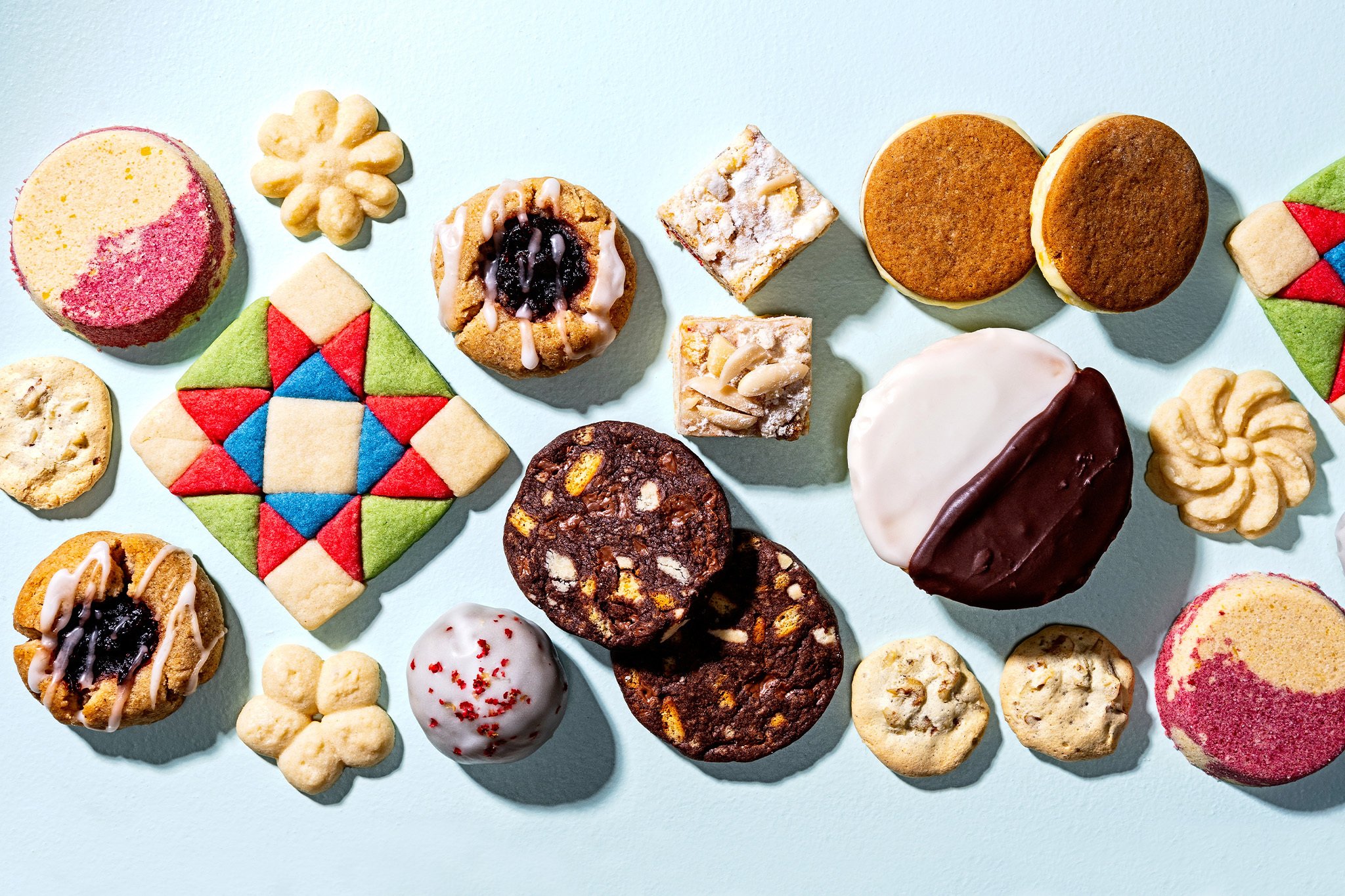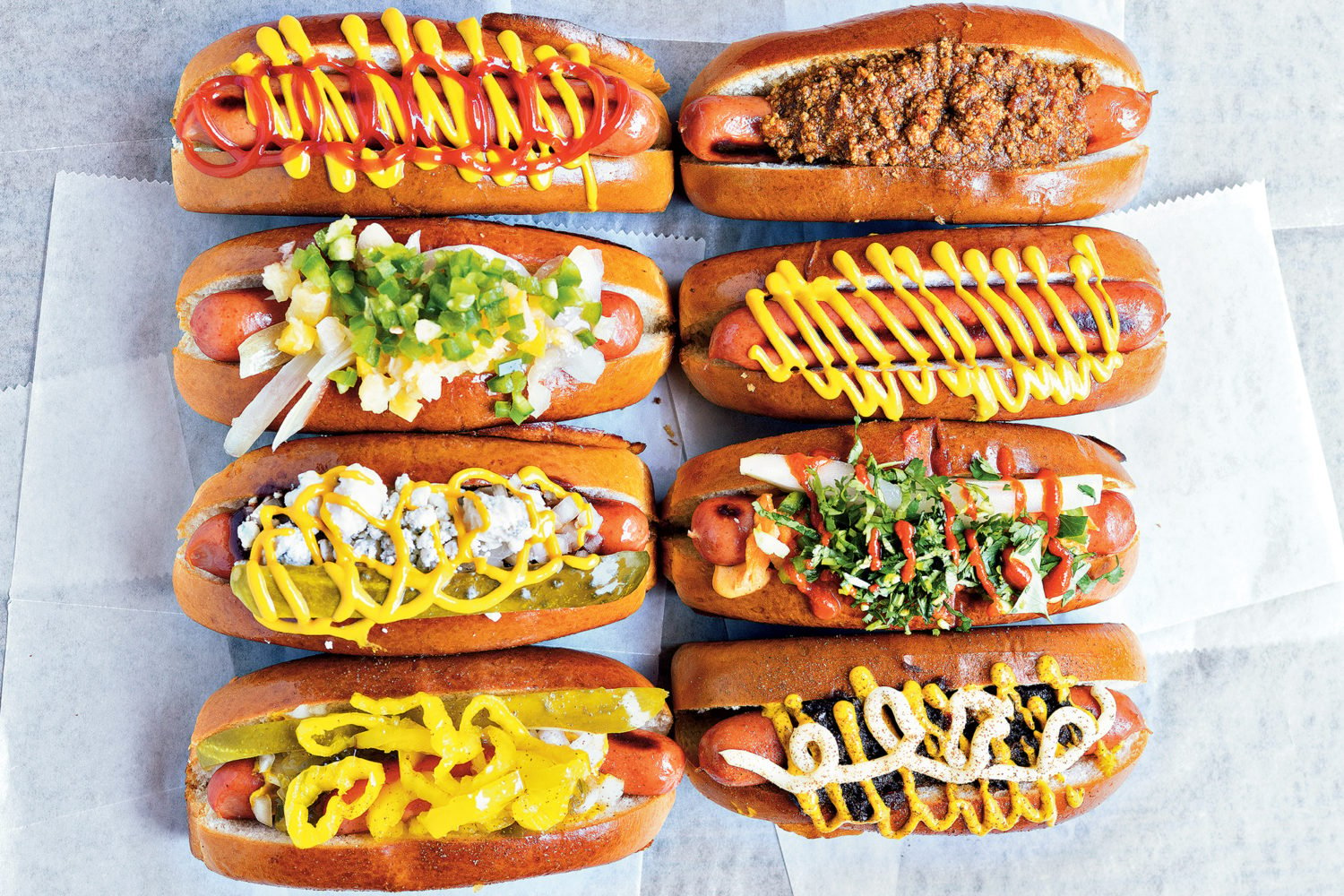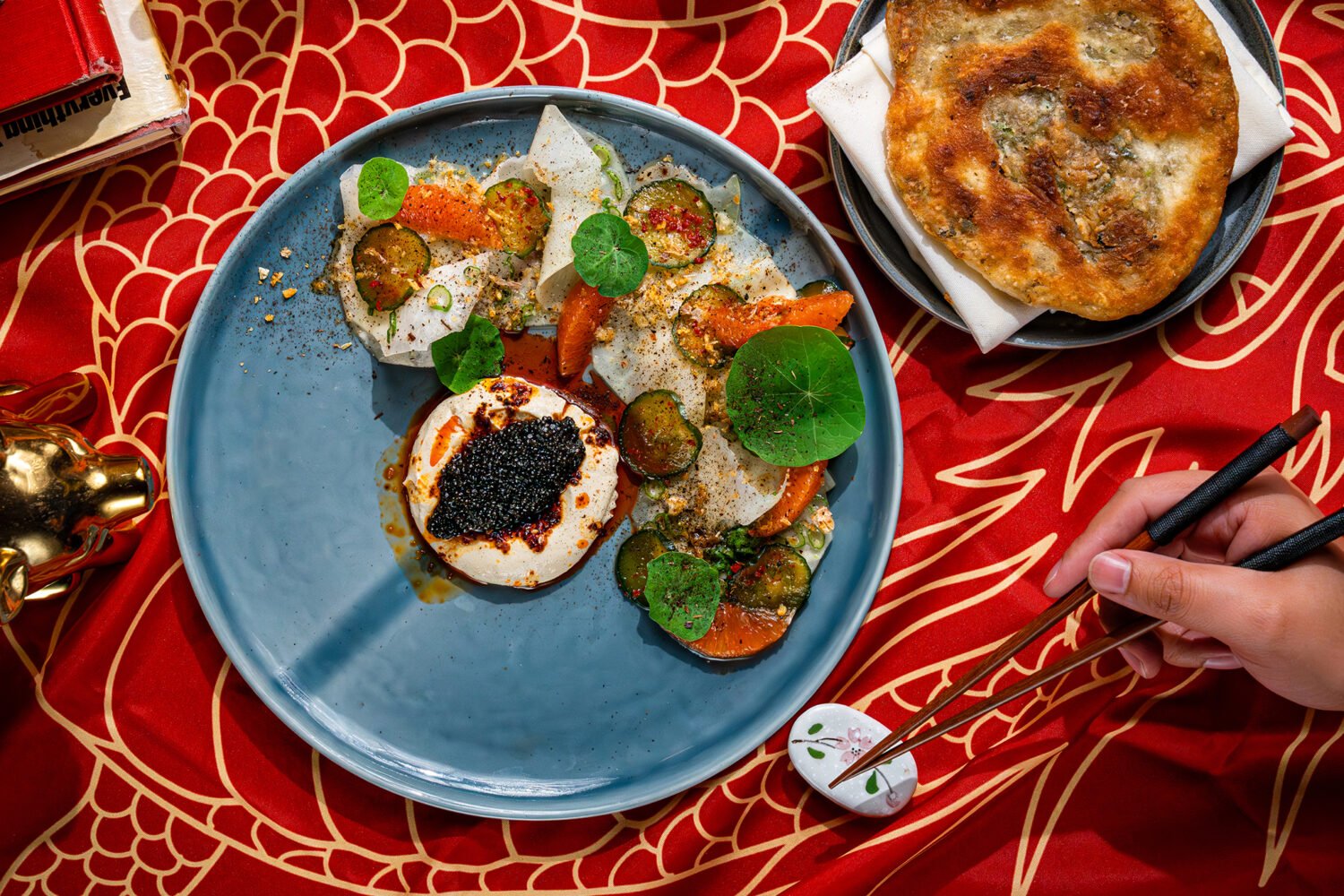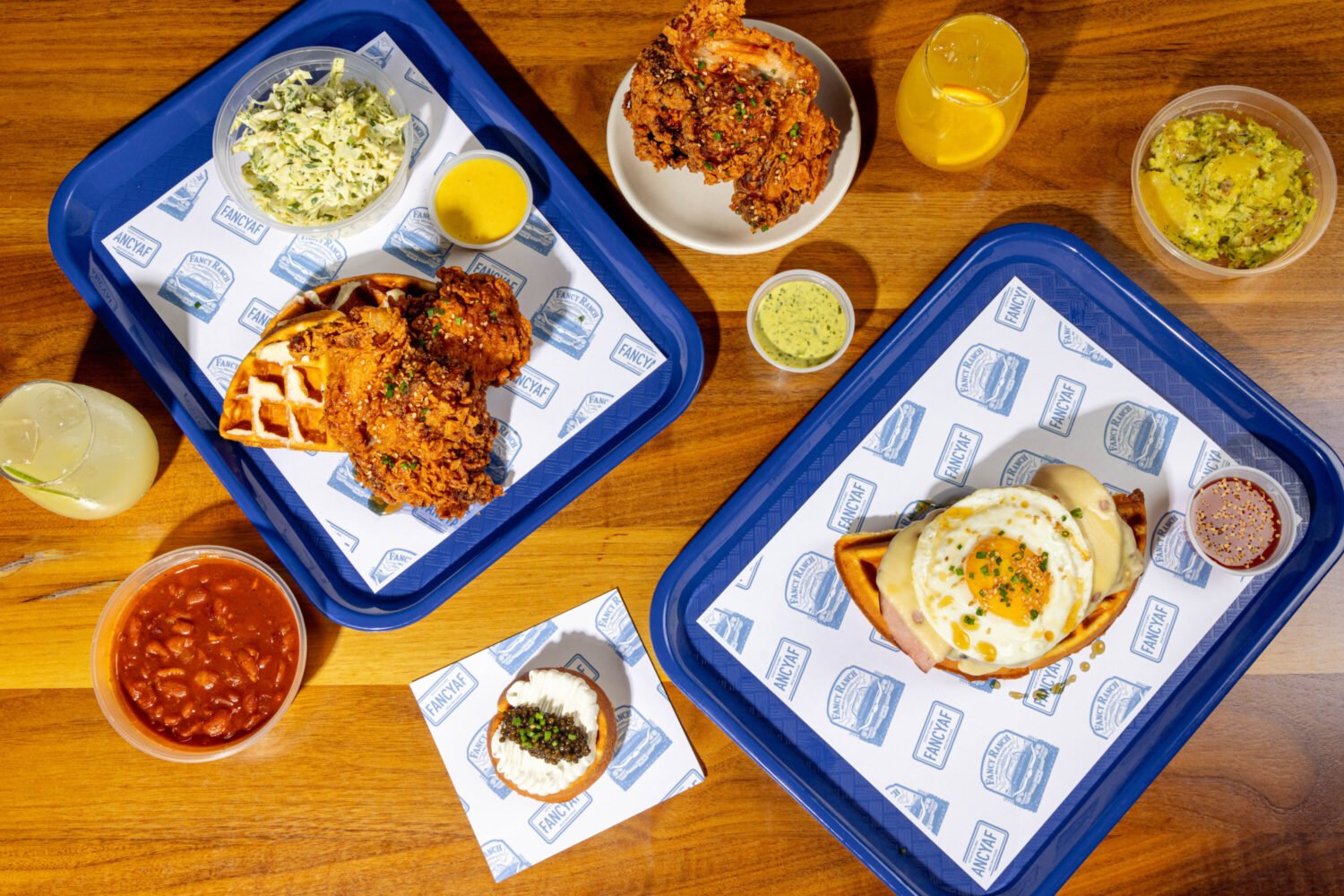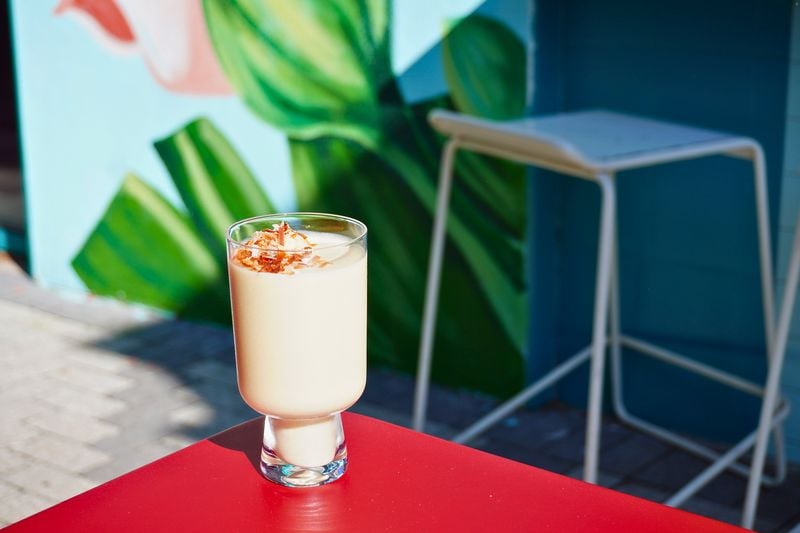On Thursday, the Washington Post released its annual holiday cookie package, a collection of 10 recipes (including one elaborate “cookie project”) meant to delight even the Grinchiest guests at your holiday party. This year, the package includes recipes for five-spice cranberry thumbprint cookies, gingersnap and orange cream sandwiches, and a showstopping quilt-inspired sugar cookie.
Becky Krystal, the Post’s recipes editor, spearheads the holiday cookie package. It’s a monumental effort. Each March, she starts querying recipe developers, then winnows their 30-ish cookie pitches to 10 or 11 finalists. Those cookies are developed by June, and then the recipes are tested and refined throughout the summer before the cookies are subjected to a gauntlet of fall photoshoots and released to the public after Thanksgiving. This week, in the midst of cookie mayhem, Krystal hopped on the phone to discuss which recipes she loves most and where bakers tend to struggle with their holiday desserts. Our conversation, edited and condensed, is below.
Of all the cookies in this year’s package, do you have a favorite?
Oh, you’re not going to make me answer that, are you? It’s like picking a favorite child. I don’t think I can pick a favorite. I can’t.
Fair enough. Your job is to curate a collection of cookies that all complement each other. How do you make a satisfying mix?
The biggest thing that I want is accessibility. Skill-wise, I want recipes that pretty much anyone can pick up and make. I also go for recipes that include different backgrounds and cultures. Traditionally, cookie collections have skewed more Western European, and so I want to make sure that we’re opening the door to as many different types of foods and ingredients as we can.
Then I’m always looking at types: drop cookies, slice-and-bake cookies, bars, thumbprints, no-bake. I try to have multiple options that are gluten free and vegan. You’ve got to have something chocolatey, something that has a little booze, something with citrus, something that has spices. It’s really hard to pack them all into, like, a 10- or 11-recipe package every year. It’s like that scene in A Beautiful Mind where you have all the numbers and stuff on the glass—that’s what I feel like when I’m trying to evaluate them.
When you evaluate the cookies, are aesthetics and flavor ever in conflict?
Often, yes, because some of the most delicious cookies are brown. It’s just a fact: butter, sugar, flour—you bake it, it turns brown. But I am always going to lean into flavor. I certainly take aesthetics into account, but I’m not going to discount something because it’s brown. And you can do a lot to make a cookie look good. You can have a sprinkle of turbinado sugar on top, a dusting of confectioners sugar. There are these pfeffernüsse we have, a traditional German cookie—they get dipped completely in icing, and then you can put sprinkles on top, or nonpareils or crushed pink peppercorns.
How do you decide which ingredients are too esoteric? Some of the cookies this year call for tiger nut flour or dried white mulberries or buttermilk powder.
I try not to pick things that are hard to get. I don’t want to limit people who are developing these recipes, but I also don’t want to turn [readers] off. So for some of these harder-to-get ingredients, we try to offer substitutions. The dried white mulberries can easily be swapped with a different dried fruit. We’ve called for things like ube extract, but you can use vanilla extract instead. We’re trying to use the best ingredient for the recipe—as long as there is a reasonable way to get it—and offering substitutions for people who can’t get it.
But I’m not going to turn down someone who offers an interesting recipe that is different from something we’ve had before, [especially if] there’s a good reason in someone’s culture to use that ingredient. I don’t think it’s fair [to say no] to someone just because people may have certain expectations of what should be in a cookie recipe or how easily an ingredient can be acquired. It’s a balancing act, but I lean more towards making sure we’re as inclusive as possible, both in the recipes we pick and in making sure we have substitutions where they’re needed.
Are there ingredients you’ve gotten excited about from editing the cookie recipes?
I got absolutely obsessed with these lemongrass and pandan thumbprint cookies, which came from Abi Balingit, who wrote the Mayumu Filipino-American baking book. They were filled with this pandan jam. It’s bright green from the pandan, and it’s made with coconut, too, so it’s fruity. I just started spreading that on, like, toast. That was an ingredient that I really fell in love with.
Working on these cookie recipes has also made me much more inclined toward rose water and orange blossom water. I was always a little skeptical of floral flavors—like, this stuff tastes like potpourri. But you have to use it in the right amount, in the right context. We had these orange blossom snickerdoodles the other year, which were just perfect, because there was the spice and there was the floral, and it wasn’t overpowering. I absolutely love those.
The New York Times cookie week has become sort of a behemoth in holiday cookies. How do you compete with them?
Yeah, it’s funny. At the Post, this is our 20th year of doing holiday cookies. I think this is [the Times’] fifth year. So we’ve been doing it for a very long time. I think there’s room for more cookies for everyone. Bon Appétit does a package, King Arthur baking usually does a wonderful package. So it’s not just us, but we approach it a little differently, certainly in terms of the recipe selection and the way we package things.
What are those differences?
Um, I will give [the Times] this—they get to do a lot of stuff with video and social [media] that we haven’t been able to capitalize on yet.
In terms of the actual recipes, our package typically has more recipes. I think theirs was seven this year, and we have 10. And I think our approach is slightly more global. I think we push the bounds a little bit more in that respect.
Where do bakers typically go wrong with cookies? Do you have any advice?
Oh boy, do I. One [mistake] would be not weighing the ingredients, like operating on volume instead of weight. That can make a huge difference, especially with flour. Another one that I found out by personal experience is not waiting long enough for your oven to preheat. Ovens can be really slow to get up to temperature, especially if it’s older. And if you put in your cookies too early, they might spread too much rather than set. They might not get dark enough. They may be under-done. So, ignore the preheat chime on your oven. You need to use an inexpensive oven thermometer to know if your oven is actually at 350, because those preheat chimes are often programmed based on time, not actually where the oven is.
Oh, I had no idea.
Yeah, don’t trust it. Get to know your oven. How many of these [tips] do you want?
I’m learning a lot. This is great advice.
Insufficiently creaming butter and sugar is another big one. I think home cooks almost universally under-beat the butter and the sugar, which means you’re not going to get as light a cookie. So make sure it’s actually legit looking fluffy before you move on.
Relatedly, make sure your butter is actually softened enough but is not too melted either. It has to be at the right texture to get voluminous. If it’s too cold, you’re not going to be able to beat the air into it. If it’s too warm, it’s just going to pancake out. If your recipe is calling for softened or room-temperature butter, mid 60s is good. Put your finger in it. If it’s really resistant, it’s probably too cold. If your finger goes all the way through, it’s too soft. If it takes a dent, then you’re good to go.
It’s a really intimate thing to be guiding people’s holiday cooking.
I think about that a lot every time I publish or edit a recipe because we are inviting people to come along with us. We ask that people trust us with their time and their effort and their ingredients. So I take it extremely seriously, and that’s why I put so much work into it every year, because I know that those things matter to people. I want to delight people, and I want them to come back for more.
The Post cookie section has been around for so long, so it really is beloved by people. I have people emailing me months in advance, “When’s it coming out?” “I want to make sure I see it.” “I want to make sure I get a print copy.” I heard from two best friends who started making all of the cookies every year, and then they mail out boxes to people and send along scoring sheets. My son’s best friend’s grandmother and his dad, they make all the cookies every year. This is a huge responsibility. I don’t take that lightly.
Which cookies do you personally leave out for Santa?
Well, I’m Jewish. But if I were to put any out for Santa, these golden milk sugar cookies that we ran last year are phenomenal. They’re so easy—they are a stir-together cookie, inspired by golden milk with turmeric and spices. They’re big and soft and chewy and beautiful. I’ve started making these as my go-to when I need to bring cookies somewhere, and people absolutely go bonkers for them.
There’s also these chocolate-raspberry truffle sandwich cookies. Holy moly. It is like eating a truffle in cookie form, and it has a raspberry boozy ganache in the middle. I absolutely adore those. There are these white chocolate, rosemary, and almond biscotti from a couple years ago, which just feel like winter. They go great with coffee or hot cocoa. And then these sesame blossoms—they’re like peanut butter blossoms, except they use tahini and they’re coated in sesame seeds. Those are some of my top picks.

